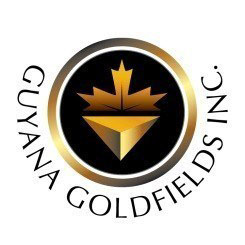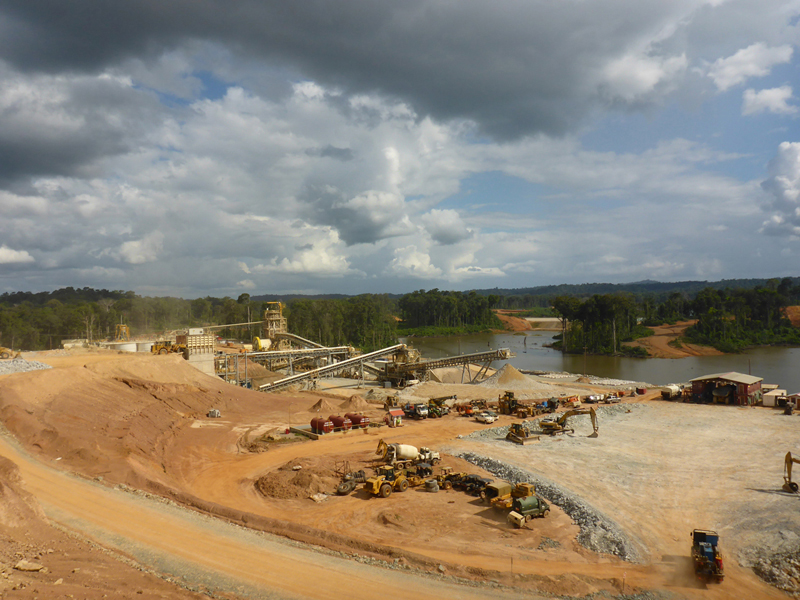Canadian goldminer, Guyana Goldfields Inc (GGI) saw a big slump in earnings from its Region Seven mine in 2018 and production fell by 10,050 ounces compared to 2017.
In its financial results released this week, the company said that its fourth quarter production of 42,750 ounces was the highest for 2018.
The company, which is in a dispute with shareholders and former senior officials over how operations have being going since 2015, said that on a full-year basis in 2018, it produced 150,450 ounces, a decline of 10,050 ounces compared to production from the prior year.
 The decrease was mainly attributable to a lower head grade but offset by higher mill throughputs averaging 7,100 tonnes per day (tpd) (2017 – 6,100 tpd).
The decrease was mainly attributable to a lower head grade but offset by higher mill throughputs averaging 7,100 tonnes per day (tpd) (2017 – 6,100 tpd).
GGI said that the daily average mining rate continued to rise through the fourth quarter, averaging 69,200 tpd, representing a new record and a surge of 176% when compared to the same quarter in 2017.
On a full year basis, it said that the daily average mining rate improved by 50% in order to meet the increase in stripping ratio for Rory’s Knoll open pit development.
It said that the decrease in head grade for the year was due to the unforeseen, late mobilization of the contractor (Stracon S.A) which resulted in a slow ramp up in the mining rate.
The increase in costs on a quarterly and full year basis were largely driven by higher mining and processing volumes, lower gold ounces sold from a lower average head grade and a higher strip ratio due to mine sequencing, and higher output costs, the company said.
Based at the Aurora mine site in the Cuyuni, GGI said that in the fourth quarter, a total of 37,450 ounces of gold were sold with an average realized gold price of US$1,244 per ounce. This resulted in revenues of US$46.5 million, a decline of US$14.9 million compared to the fourth quarter of 2017.
Earnings from mine operations were US$36.6 million for the year, a decline of US$21.6 million from the previous year and largely driven by increased mining and processing volumes, lower gold ounces sold from lower average head grade and increased production costs. These de-clines in production costs were mitigated by lower deprecation and lower cost of sales adjustment.
The net loss for the quarter amounted to US$2.0 million.
GGI said that the Company finished the year with a cash balance of US$82 million and total debt reduced to US$40 million, down from US$60 million as at the end of 2017.
“The Company elected not to make the voluntary accelerated debt repayment of US$20 million during the fourth quarter of 2018, providing the Company with additional short-term liquidity. Under the current terms of the loan agreement, the Company is scheduled to make eight additional quarterly payments of US$5 million to retire the debt over the next two years”, GGI said.
The Company says it expects gold production to be between 145,000-160,000 ounces this year. The mid-point of production guidance is 152,500 ounces, which, if attained, would represent an increase of 1.4% from 2018. The Company says it expects production will be evenly weighted in first and second half of the year.
Speaking on the company’s updated resource model, Scott Caldwell, President & CEO said “Aurora has produced more than 500,000 ounces of gold in just over 3 years of commercial production and, despite some tough challenges, we remain confident in our future success”.
“The results of (Roscoe Postle Associates Inc) work are a snapshot that demonstrate a profitable future as the mine transitions from an open pit operation into an underground mine. It provides a prudent and achievable operating plan and ensures an accurate model for production and cost forecasting.
“We have identified and initiated a number of cost savings programs that will lead to improved operational efficiency. We have strengthened our leadership team, streamlined our organizational structure, initiated partnership arrangements with key contractors and suppliers and, in addition, implemented improved operating procedures and optimized our capital spending.
“We continue to believe that there is considerable, untapped potential for additional, high-quality ounces in this system. We expect to access high-grade zones beneath Mad Kiss with our underground exploration development later this year and will look to secure our permit for commercial underground production in a timely manner”, Caldwell said.

